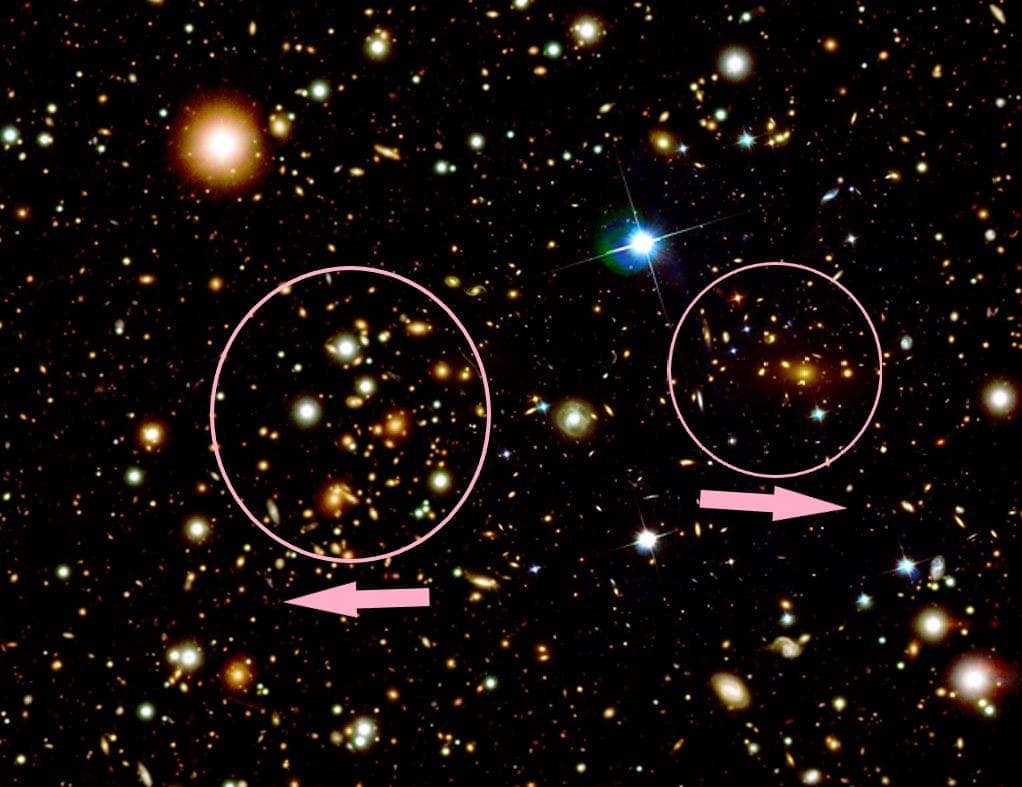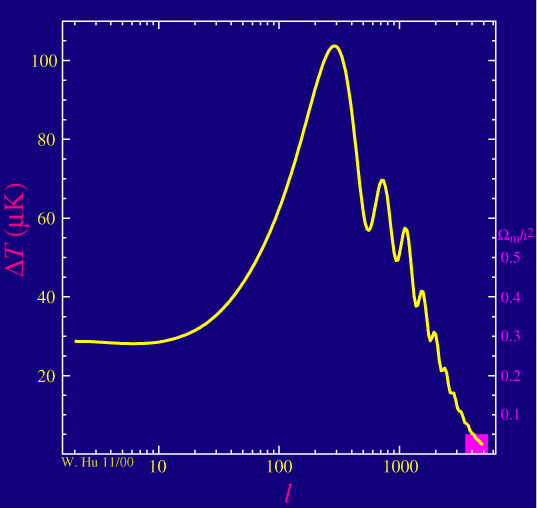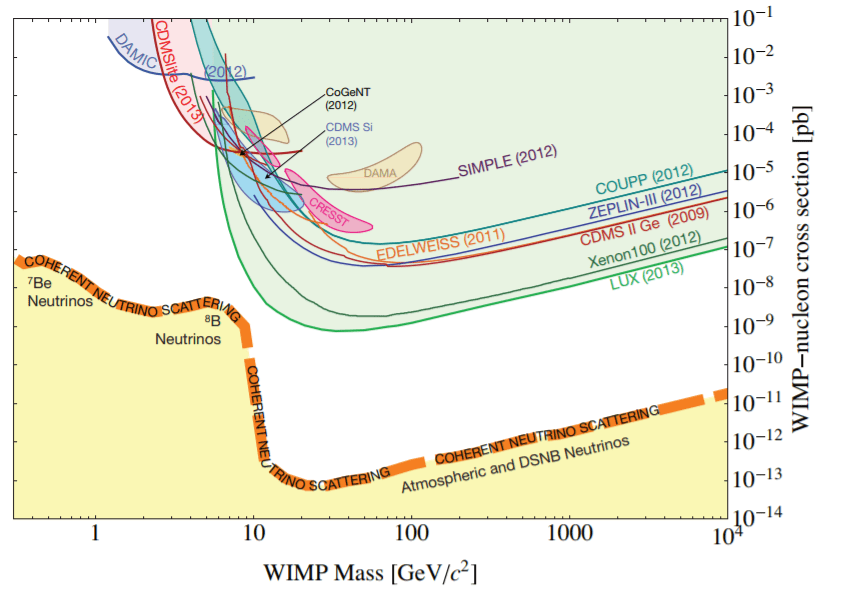If you’ve been following our space articles, you may have come across something called “dark matter”. It’s the most abundant type of matter in the universe — our best models have established that dark matter comprises 84.4% of the matter contained in the known universe — but we still don’t really understand just what it is. Dark matter is something that we know is out there, but we have little idea what it’s made of.

Wait, so how do we know it’s even real?
“Regular” matter (technically called baryonic matter) is made of electrons, protons, and neutrons. Cosmologists define the three particles as baryons –technically speaking, electrons are something else, but that’s beside the point here. Baryons make up gas, gas makes up stars, stars go boom and make planets and other things — including you. Yes, you are made of star stuff — baryonic star stuff, to be precise.
All this is done thanks to the electromagnetic (EM) force that forms chemical bonds, glueing regular atoms together But Dark Matter (DM) plays a different game.
Dark matter doesn’t interact with things the way baryonic matter does. It doesn’t scatter or absorb light, but it still has a gravitational pull. So if there are beings made of dark matter living right here, right now, you probably wouldn’t even know it because the perception of touch is felt when your sensory nerves send the message to your brain, and these nerves work thanks to the EM force.
We can’t touch dark matter, and no optical instruments can detect, so how do we ‘see’ it? Indirectly, for starters. Look for gravity, if there isn’t enough visible mass to explain to explain the gravitational pull felt by a region of the universe, then there something there. Invisible does not mean non-existant. If it weren’t for its gravity effect, there would be little indication of dark matter existing.
The main observational evidence for dark matter is the orbital speeds of stars in the arms of spiral galaxies. If Kepler and Newton were correct, stars’ velocity would decrease with the orbital radius in a specific way. But this was not observed by Vera Rubin and Kent Ford, who tracked this relationship. Instead, Rubin and Ford got a velocity vs radius relation that looked like the stars had a nearly constant behavior from a certain point of the galactic orbit.
This could only be explained if there would be a lot more matter somewhere that we’re not seeing. Something was pulling at these stars gravitationally, and that something is dark matter.
Another important evidence of dark matter comes from galaxy superclusters like 1E 0657-558. Astronomers observed that within this cluster, there are two groups of galaxies placed in a peculiar position to one another.
If you look at the Hubble Space Telescope image below (1st and 2nd), you’ll notice that there are many galaxies on the left and another group on the opposite side. When astronomers observed in X-ray, they concluded that these two clusters collided and left a gas trace of the shock. The faster cluster was like a bullet (it’s even named the Bullet Cluster) passing through the slower one at around 3000–4000 km/s nearly 100-200 million years ago (3rd pic).



But one of the most convincing evidence of dark matter came with gravitational lensing.
Scientists used gravitational lensing to estimate the mass of the objects involved in the collision. They found that the galaxies which hadn’t collided agreed with the weak lensing detections. This indicates those galaxies are ahead of ‘the X-ray evidence’ (below, 1st image). Since dark matter doesn’t interact with nearly anything, in this phenomenon, we see a bunch of mass (blue) moving faster than the gas (purple), barely affecting the baryonic matter (2nd image).


So what is Dark Matter?
Just because we don’t know what dark matter is doesn’t mean we have no idea. In fact, researchers have a few theories and are considering several plausible candidates.
There are three ways to classify dark matter. Cold dark matter describes the formation of the large-scale structure of the universe and is the fundamental component of the matter in the universe. It’s called cold because it moves ‘slowly’ compared to the speed of light.
Weakly interacting massive particles (WIMPs) are the candidates for cold dark matter particles. They supposedly interact via weak nuclear force. The particles which belong to this group are thought to be the lightest particles of the supersymmetric theories. Neutral examples of these particles could have been produced in the early universe, and later participated in the formation of galaxy clusters.
Hot dark matter is the opposite, it moves close to the speed of light. The warm candidate particles are thought to be less interactive than neutrinos.
Another candidate particle for dark matter is the sterile neutrino — a hypothetical particle that interacts only via gravity and not via any of the other fundamental forces. These would be responsible for forming warm dark matter. They also seem to be heavier than the standard neutrino, and have a longer lifetime before they break down.
Neutrinos were thought to be the best candidates for dark matter. Neutrinos are weird particles — they barely interact with things, and even then only gravitationally (which is a weak interaction). Besides, they do not possess electrical charge, which is why they do not interact electromagnetically. However, the neutrino temperature is high and they decouple (stop interacting with other forms of matter) only at relativistic velocities. If dark matter was made of neutrinos, the universe would have looked radically different.
Massive Compact Halo Objects (MACHOs) represent a different type of candidate. They’re no WIMPs at least. They aren’t particles either, but rather brown dwarfs, planets like Jupiter, black holes in galactic haloes. The best possible MACHOs are primordial black holes( PBHs). Different from the ordinary black holes we see in the center of galaxies, PBHs are thought to have been created nearly 10 seconds after the Big Bang. No evidence for such objects has yet been discovered, but it’s still an open possibility.
Detecting dark matter
Many ideas for the detection of each plausible candidate have been developed.
Through cosmology, the main evidence comes from the Cosmic Microwave Background (CMB). Yes, the same radiation Dr. Darcy Lewis detected (for real) in the TV miniseries WandaVision. It is the remnant electromagnetic radiation from when the universe was a 380,000-year-old baby.
The best CMB observations we have currently are from the Planck satellite 2018 survey. Different amounts of matter have distinct signals in the CMB observations, forming the temperature power spectrum.

If the theory is correct, the shape of the power spectrum is different for different amounts of matter. There’s such a thing known as the critical density of the universe, which describes the density of the universe if it was coasting, expanding but not accelerating, and if it stopped its expansion. When you divide the density of the observable matter by the critical density, you get its density parameter (Ω).
The temperature power spectrum is modeled according to the different amounts of ingredients in the universe, more matter or less matter changes its shape. Planck’s observations have shown that the matter density parameter is Ω h² ~0.14, so if the shape of the graph corresponds to that value we have evidence of the amount of dark matter in the universe.

There are also ways to detect dark matter directly, not through cosmology but through particle physics. The Large Hadron Collider (LHC) is the most powerful particle accelerator, can collide protons at extremely high (relativistic) speeds, generating a bunch of scattered particles that are then measured by the detectors.
Physicists hope to find dark matter by comparing the energy before and after the collision. Since the dark matter particles are elusive, the missing energy could explain their presence. However, no experiment has observed dark matter so far — though researchers are still looking.
Another underground experiment uses high purity sodium iodide crystals as detectors. The detectors at DAMA/LIBRA (Large sodium Iodide Bulk for RAre processes), for example, try to observe an annual variation of regular matter colliding with WIMPs due to the planet’s motion around the Sun which means we’re changing our velocity relative to the galactic dark matter halo. The problem is that DAMA’s 20 years’ worth of data didn’t have enough statistical significance. However, in an identical experiment meant to directly detect dark matter, called ANAIS (Annual modulation with NaI Scintillators), in 3 years scientists gathered more reliable data indicating this method is not conducive to finding dark matter anytime soon.
To get a better picture of the challenge in having a conclusive result, take a look at the image below. All those lines and colorful contours represent the results of different experiments, none of them seem to agree. That’s the problem with dark matter, we still don’t have the evidence to match any theory we came up with — and we can’t really rule out any possibilities either.

and regions of interest. Credits: J. Billard and E. Figueroa-Feliciano.
The questions of what dark matter is and how it works still have no satisfying answer. There are many detection experiments being planned and conducted in order to explain and verify different hypotheses, but nothing conclusive thus far. Let’s hope we don’t have to wait another 20 years to figure out if one experiment is right or wrong. Unfortunately, groundbreaking discoveries can take a lot of time, especially in astrophysics. While we wait, dark matter will continue to entertain our imagination.
The article was primarily based on the 2020 Review of Particle Physics from Particle Data Group’s Dark Matter category.





